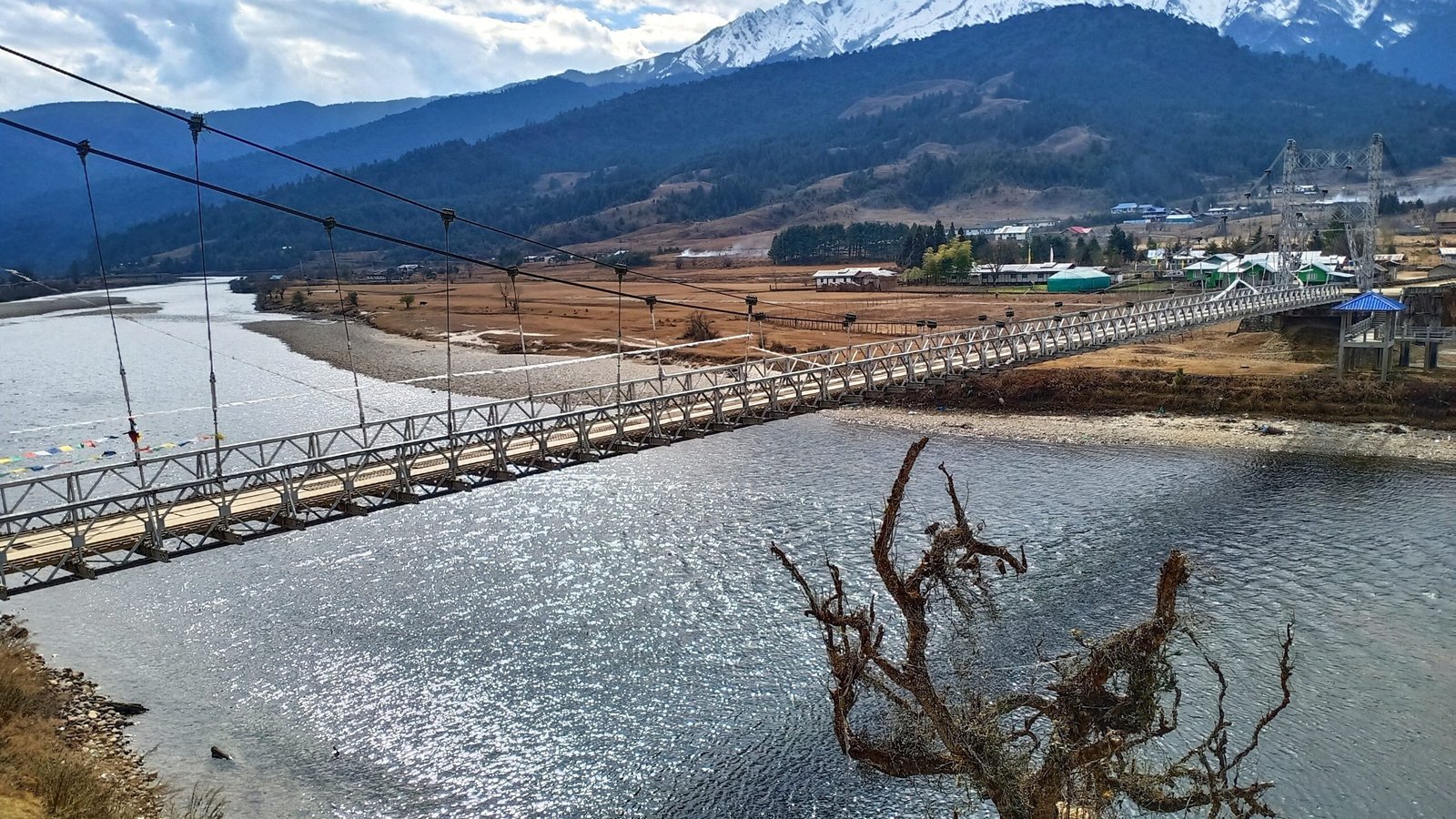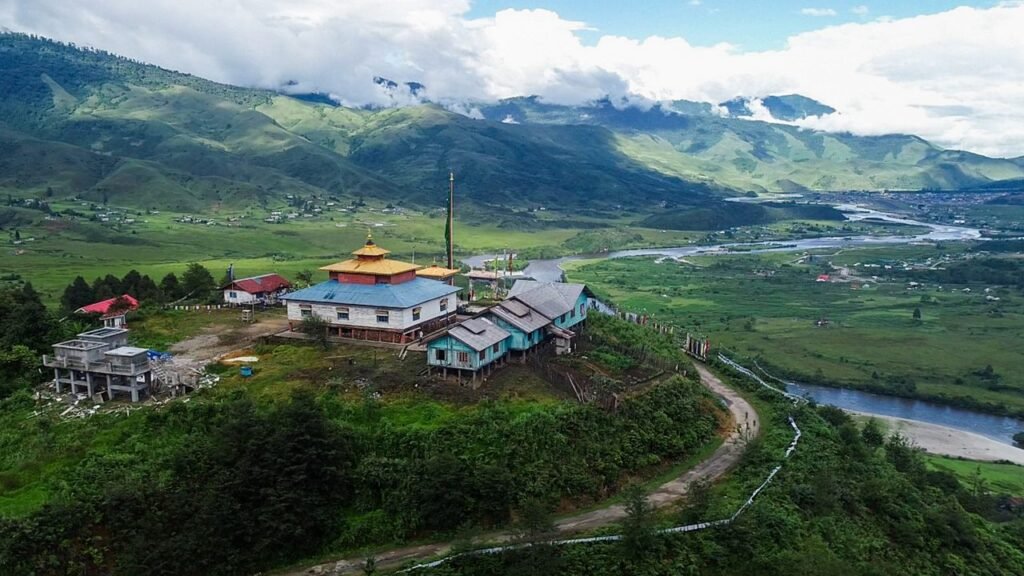Mechuka Valley is a breathtaking and culturally rich destination tucked away in the remote hills of Arunachal Pradesh, India. Known for its pristine landscapes, diverse tribes, ancient monasteries, and unique spiritual energy, Mechuka Valley captivates both adventure seekers and cultural enthusiasts. This article provides a comprehensive exploration of Mechuka Valley, highlighting its history, culture, tourist attractions, access routes, economic impact, and much more, ensuring clarity and search engine optimization throughout.
Location and Geography
Mechuka Valley is situated in the Shi Yomi district of Arunachal Pradesh, just 29 kilometers from the Indo-Tibet border. Nestled along the banks of the Yargyap Chu (also known as the Siyom River), the valley lies amid sweeping grasslands, snow-covered peaks, and dense forests, offering a dramatic panorama that rivals the world’s most scenic destinations.
Key Details:
History of Mechuka Valley
Historically, the region was home to several indigenous tribes, especially the Memba people, who have harmoniously coexisted with nature for centuries. Before the 1950s, Mechuka was relatively isolated, with access primarily on horseback or by trekking rugged trails. The introduction of Buddhism in the early 20th century shaped the valley’s religious and cultural identity, particularly through the establishment of ancient monasteries and the arrival of Tibetan monks.
Culture and People
Tribes and Identity
The Memba are the primary inhabitants and are closely associated with Tibetan culture and Mahayana Buddhism. Other notable communities include the Adi, Bokar, Libo, Tagin, and the Ramos, each with its own language and rituals. While the Memba are mainly Buddhist, the Adi and related tribes traditionally practiced animism but many have adopted Christianity in recent years, blending old and new customs.
Arts, Festivals, and Rituals
Mechuka’s culture is expressed through handicrafts such as handwoven shawls, textiles, and spiritually significant ornaments. The valley comes alive during festivals like Losar (Tibetan New Year), Saga Dawa (celebrating Buddha’s life), and Mopin (spring festival), featuring prayers, dances, music, and elaborate rituals.
Oral storytelling and folk music pass down local myths, historical tales, and moral teachings. The sacred relationship with nature is evident in rituals, environmental stewardship, and folklore about rivers, stones, and the mighty mountains.
Top Tourist Attractions in Mechuka Valley
- Samten Yongcha Monastery: A 400-year-old monastery perched on a serene ridge, known for its ancient murals, large prayer wheels, and tranquil ambiance.
- Gurudwara Guru Nanak Taposthan: A site of interfaith significance, believed to have been visited by Guru Nanak, attracting both Sikhs and other visitors.
- Mechuka La Pass/Trekking Trails: Offers panoramic views of the valley and nearby peaks, making it a favorite for trekking enthusiasts.
- Yargyap Chu/Siyom River: Glacial streams revered for their healing and spiritual properties; riverbank walks and stone-based fortune rituals are unique experiences.
- Dorjelling and Dechenthang Villages: Authentic glimpses of the traditional Memba lifestyle, with stone and wood houses, farmlands, and a welcoming community spirit.
- Local Festivals and Adventure Events: The annual Mechuka Adventure Festival combines cultural showcases with adventure sports, drawing tourists and boosting local revenue.

History and Legends
Mechuka’s oral histories recount arrivals of the founding tribes, the influence of Buddhism, and legends about celestial forces, healing waters, and prophecy stones. These stories are vital to the valley’s identity and are passed down through generations during nightly gatherings and ceremonial music.
Route and Accessibility
Mechuka Valley is accessible via Aalo (formerly Along), the main town connecting the valley to the rest of Arunachal Pradesh. The most popular route:
- By Air: The nearest airport is at Dibrugarh (Assam). From there, roadways lead to Aalo, and further to Mechuka.
- By Road: It’s a scenic but challenging journey from Aalo to Mechuka (approximately 180 km; 8–10 hours), traversing mountainous roads with picturesque stops along the way.
- By Rail: The nearest railway station is Silapathar (Assam), followed by travel via road.
Tourist permits (Inner Line Permit for Indians, Protected Area Permit for foreigners) are mandatory due to the valley’s proximity to the international border.
Economic Significance and Revenue
Tourism is now the primary engine driving revenue in Mechuka Valley. The region has seen notable growth in visitor numbers since the late 2010s, with homestays, cultural tours, and adventure activities emerging as major income sources. Government-sponsored festivals and local co-operatives help ensure that revenue benefits indigenous communities and supports heritage preservation.
Traditional livelihoods such as agriculture, weaving, and animal husbandry continue, with surplus products sometimes sold to visitors during festivals and market days.
Conservation and Challenges
The increasing popularity of Mechuka Valley presents conservation challenges: balancing economic growth, environmental integrity, and cultural preservation is an ongoing concern. Initiatives for eco-tourism, community-managed hospitality, and waste management have been launched to protect Mechuka’s delicate ecosystem and legacy.
FAQs About Mechuka Valley
What is the best time to visit Mechuka Valley?
The best months are October to March for pleasant weather and snow-capped views. March–April and February are ideal to witness festivals like Mopin and Losar.
What are the main tribes in Mechuka Valley?
The main tribes are the Memba (primarily Buddhist), Adi, Bokar, Tagin, Ramos, and Libo, each contributing to the valley’s diverse cultural tapestry.
How do I reach Mechuka Valley?
Travel involves a flight or train to Assam (Dibrugarh or Silapathar), then a road journey to Aalo and onward to Mechuka. Special permits are required for all visitors.
What are the must-see attractions in Mechuka?
Top attractions include Samten Yongcha Monastery, Gurudwara Guru Nanak Taposthan, Dorjelling village, Yargyap Chu river, and the scenic trekking routes.
What unique experiences does Mechuka offer?
Visitors can explore ancient monasteries, participate in healing rituals at glacial streams, trek to Mechuka La, witness vibrant tribal festivals, and enjoy village homestays.
What are the accommodation options?
Options include locally run homestays, government lodges, and guesthouses that offer authentic cuisine and cultural immersion, often organized by community co-operatives.
How safe is Mechuka Valley for tourists?
Mechuka is safe, but the journey is rugged and remote, so adequate preparation, guided tours, and respect for local customs are advised. Authorized permits are essential as the valley borders Tibet/China.
What economic impact has tourism had?
Tourism has improved livelihoods by creating jobs in hospitality, craft sales, guiding, and event organization. However, sustainable tourism is emphasized to protect Mechuka’s fragile environment and traditions.
Conclusion
Mechuka Valley remains a hidden gem of Arunachal Pradesh, offering travelers an extraordinary blend of natural beauty, deep-rooted spirituality, vibrant tradition, and Himalayan adventure. From the ancient monasteries and tribal festivals to the healing rivers and scenic trails, every element of Mechuka Valley tells a story of resilience, faith, and harmonious coexistence with nature.
